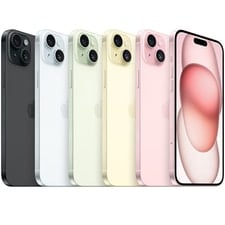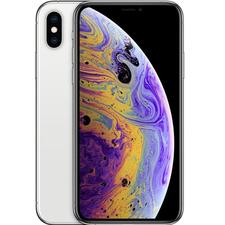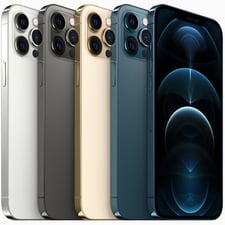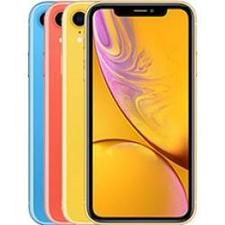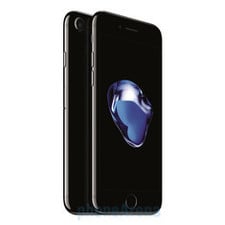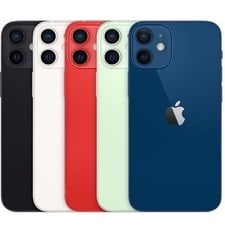A Comprehensive Comparison: Apple iPhone 15 vs. Apple iPhone 14
The ever-evolving world of smartphones continues to intrigue and captivate consumers with each new release. Apple, a trailblazer in this industry, consistently raises the bar with its iPhone series, and the latest iterations, the iPhone 15 and iPhone 15 Plus, are no exception. In this comprehensive comparison, we delve into the key differences between the iPhone 15 and its predecessor, the iPhone 14, to help you make an informed decision on whether to upgrade.
The Evolution of iPhone: iPhone 15 and iPhone 15 Plus
The iPhone 15 and iPhone 15 Plus bring forth a host of enhancements that set them apart from their predecessors. From the introduction of the Dynamic Island for alerts and live activities to brighter displays, USB-C connectivity, and faster performance via the A15 Bionic chip, these devices promise a more refined user experience. Notably, camera enthusiasts will find a range of exciting upgrades, including a new 48MP main sensor.
However, before diving into the details of the iPhone 15, it’s important to acknowledge that the iPhone 14 remains a formidable contender in the smartphone arena. With its base model starting at $1020 for the 128GB variant, the iPhone 14 offers an attractive combination of features and affordability. In this comparison, we aim to provide you with a comprehensive overview of the iPhone 15 and iPhone 14, equipping you with the knowledge needed to make the best choice for your unique requirements.
Design: Familiar Yet Refreshed
The iPhone 14 family maintains the iconic design elements seen in previous generations, with some subtle refinements. These devices feature flat-sided designs, accompanied by either a notch (on the basic models) or a Dynamic Island (for the Pro models), housing the front selfie camera. Users can choose from both Pro and non-Pro models, each available in 6.1-inch and 6.7-inch OLED displays. Unfortunately, the compact 5.4-inch option, as seen in the mini series, is no longer available. Notably, the Pro models boast always-on display capabilities, a 120Hz ProMotion refresh rate, and higher peak brightness, enhancing the visual experience.
The iPhone 15 retains the familiar aesthetics of its predecessors but introduces subtle refinements that contribute to a distinct feel. The device features rounded edges on both the back and front, enhancing its ergonomics. Additionally, the back of the iPhone 15 boasts a new matte finish on the glass, providing both a premium feel and improved grip.
The aluminum side rails and IP68 dust and water resistance ratings, first introduced in the iPhone 14, have also made their way to the corresponding iPhone 15 models. Apple has made a noteworthy change by replacing the old mute switch on the side of the iPhone with a new “Action Button” on the iPhone 15 Pro and Pro Max. This versatile button can be customized to perform various functions, such as activating the flashlight, initiating a Focus mode, executing a custom shortcut, or simply muting the phone, similar to the previous switch. However, it’s important to note that this button is exclusive to the iPhone 15 Pro models.
One of the most significant design changes across the entire iPhone 15 lineup is the incorporation of the Dynamic Island. Previously exclusive to the iPhone 14 Pro models, this unique design feature is now present on all iPhone 15 models. If you’ve been envious of your friends with iPhone 14 Pros showcasing the Dynamic Island, you can now enjoy this distinctive design element on any iPhone 15 model of your choice.
Another notable design change is Apple’s transition from Lightning to USB-C charging. With this shift, you bid farewell to your Lightning cables when upgrading to an iPhone 15. The new iPhone 15 USB-C port, mandated by the European Union, enables faster charging and file transfers via USB-C, offering improved file transfer speeds compared to older iPhones.
Photography Reinvented: Camera Upgrades
The iPhone 14 introduced significant camera upgrades when it succeeded the iPhone 13, including an auto-focusing selfie camera on all four models and a 48MP main camera on the Pro models. Apple has democratized the 48MP shooter by equipping every iPhone 15 model with this impressive main camera. However, differences in sensor quality set the iPhone 15 Pro models apart from their more affordable counterparts in the camera department.
The iPhone 15 Pro models receive several camera enhancements exclusive to their lineup. Both models can now shoot in different focal lengths (24mm, 28mm, and 35mm), providing greater versatility for photography enthusiasts. The iPhone 15 Pro Max takes it a step further with a new “tetra prism” telephoto lens, offering up to 5x zoom and a 120mm focal length.
It’s worth noting that this advanced telephoto lens is exclusive to the iPhone 15 Pro Max due to its larger size. The Pro models of iPhone 15 also benefit from software-based improvements not shared by their more budget-friendly counterparts. These include a new Photonic Engine designed to enhance night shots and the support of the A17 Pro chip, powering the new Pro iPhones.
Power and Performance: A17 Pro Chip
The iPhone 14 marked a significant shift in Apple’s chip distribution strategy, with base models retaining the older A15 chip while the iPhone Pro models received the newer and faster A16 chip. In a similar vein, the iPhone 15 continues this two-tier chipset approach. The iPhone 15 and iPhone 15 Plus are equipped with the A16 chip, previously powering the Pro models of the previous year, while the iPhone 15 Pro and iPhone 15 Pro Max feature Apple’s latest A17 Pro chip.
The introduction of the A17 Pro chip is a noteworthy development, as it represents Apple’s first foray into the realm of 3-nanometer process technology for smartphones. Apple claims this achievement as a first in the industry, and its significance lies in the promise of a faster phone for users. While the A17 Pro retains a 6-core CPU configuration similar to the A16, Apple asserts that it offers up to 10% more speed. Moreover, the 16-core Neural Engine is touted to operate at twice the speed of its predecessor.
The A17 Pro distinguishes the iPhone 15 Pro models in several ways beyond raw processing power. Notably, it features a redesigned GPU with 6 cores, a step up from the 5 cores found in the older A16. According to Apple, this results in a performance boost of up to 20%. The A17 Pro also brings new features into the mix, such as improved video quality, thanks to a new AV1 decoder, and the ability to output HDR video at 4K and 60 frames per second.
A game-changer for mobile gaming enthusiasts is the A17 Pro’s hardware-accelerated ray tracing support. This capability is significant for gaming on your phone, as it enables a more immersive gaming experience. Apple’s claims about the A17 Pro’s hardware-based ray tracing support, coupled with its optimization efforts, suggest that modern games like Resident Evil Village and Assassin’s Creed Mirage can be enjoyed on your iPhone 15 Pro with ease.
Making the Decision: iPhone 14 or iPhone 15?
Making a decision between the iPhone 14 and iPhone 15 can be challenging, especially without the benefit of comprehensive reviews of the new devices. However, a preliminary analysis allows us to discern the key differentiators and value propositions of each model.
For iPhone 15:
- 48MP Main Camera: The iPhone 15 introduces a 48MP main camera, enhancing your photography capabilities and ensuring that every shot captures exceptional detail.
- Dynamic Island for All: The iconic Dynamic Island, once exclusive to the iPhone 14 Pro models, is now present on every iPhone 15 model, providing a unique design element.
- USB-C Charging: With the transition to USB-C charging, the iPhone 15 offers faster charging and improved file transfer speeds compared to older iPhones.
- A17 Pro Chip: The iPhone 15 Pro models are powered by the A17 Pro chip, built on a cutting-edge 3-nanometer process, promising faster performance and enhanced gaming capabilities.
- Customizable Action Button: The iPhone 15 Pro models feature a new “Action Button” that can be configured to perform various functions, adding a layer of customization to your device.
For iPhone 14:
- Affordability: The iPhone 14 remains a cost-effective choice, with the base model starting at $1020 for the 128GB variant.
- Proven Performance: While not equipped with the latest A17 Pro chip, the iPhone 14 still offers reliable and capable performance for everyday tasks.
- Solid Camera Upgrades: The iPhone 14 brought significant camera upgrades, including an auto-focusing selfie camera and a 48MP main camera on the Pro models, ensuring excellent photo and video quality.
- Trusted Design: The iPhone 14 retains the classic iPhone design elements, making it a familiar and dependable choice for Apple enthusiasts.
Ultimately, your choice between the iPhone 14 and iPhone 15 will hinge on your individual priorities and budget. If you prioritize having the best possible camera, performance, display, and conveniences like USB-C, the iPhone 15 may be the right choice for you. However, if you are looking for a more budget-friendly option that still offers solid performance and camera capabilities, the iPhone 14 series remains a compelling choice.
It’s important to keep in mind that this analysis is based on preliminary information, and a comprehensive review of the iPhone 15 is essential to make an informed decision. As technology enthusiasts eagerly anticipate the release of these devices, one thing is certain: Apple continues to push the boundaries of innovation, delivering smartphones that cater to a wide range of user preferences and needs.
NETWORK
Technology
GSM / CDMA / HSPA / EVDO / LTE / 5G
2G bands GSM 850 / 900 / 1800 / 1900 – SIM 1 & SIM 2 (dual-SIM)
CDMA 800 / 1900
3G bands HSDPA 850 / 900 / 1700(AWS) / 1900 / 2100
CDMA2000 1xEV-DO
4G bands 1, 2, 3, 4, 5, 7, 8, 12, 13, 17, 18, 19, 20, 25, 26, 28, 30, 32, 34, 38, 39, 40, 41, 42, 46, 48, 53, 66 – A3090
1, 2, 3, 4, 5, 7, 8, 12, 13, 14, 17, 18, 19, 20, 25, 26, 28, 29, 30, 32, 34, 38, 39, 40, 41, 42, 46, 48, 53, 66, 71 – A2846
1, 2, 3, 4, 5, 7, 8, 11, 12, 13, 14, 17, 18, 19, 20, 21, 25, 26, 28, 29, 30, 32, 34, 38, 39, 40, 41, 42, 46, 48, 53, 66, 71 – A3089
1, 2, 3, 4, 5, 7, 8, 12, 13, 17, 18, 19, 20, 25, 26, 28, 30, 32, 34, 38, 39, 40, 41, 42, 46, 48, 66 – A3092
5G bands 1, 2, 3, 5, 7, 8, 12, 20, 25, 26, 28, 30, 38, 40, 41, 48, 53, 66, 70, 77, 78, 79 SA/NSA/Sub6 – A3090
1, 2, 3, 5, 7, 8, 12, 14, 20, 25, 26, 28, 29, 30, 38, 40, 41, 48, 53, 66, 70, 71, 77, 78, 79, 258, 260, 261 SA/NSA/Sub6/mmWave – A2846
1, 2, 3, 5, 7, 8, 12, 14, 20, 25, 26, 28, 29, 30, 38, 40, 41, 48, 53, 66, 70, 71, 75, 76, 77, 78, 79 SA/NSA/Sub6 – A3089
1, 2, 3, 5, 7, 8, 12, 20, 25, 26, 28, 30, 38, 40, 41, 48, 66, 70, 77, 78, 79 SA/NSA/Sub6 – A3092
Speed HSPA, LTE-A, 5G, EV-DO Rev.A 3.1 Mbps
BODY
Dimensions 147.6 x 71.6 x 7.8 mm (5.81 x 2.82 x 0.31 in)
Weight 171 g (6.03 oz)
Build Glass front (Corning-made glass), glass back (Corning-made glass), aluminum frame
SIM Nano-SIM and eSIM – International
Dual eSIM with multiple numbers – USA
Dual SIM (Nano-SIM, dual stand-by) – China
IP68 dust/water resistant (up to 6m for 30 min)
Apple Pay (Visa, MasterCard, AMEX certified)
DISPLAY
Type Super Retina XDR OLED, HDR10, Dolby Vision, 1000 nits (HBM), 2000 nits (peak)
Size 6.1 inches, 91.3 cm2 (~86.4% screen-to-body ratio)
Resolution 1179 x 2556 pixels, 19.5:9 ratio (~461 ppi density)
Protection Ceramic Shield glass
PLATFORM
OS iOS 17
Chipset Apple A16 Bionic (4 nm)
CPU Hexa-core (2×3.46 GHz Everest + 4×2.02 GHz Sawtooth)
GPU Apple GPU (5-core graphics)
MEMORY
Card slot No
Internal 128GB 6GB RAM, 256GB 6GB RAM, 512GB 6GB RAM
NVMe
MAIN CAMERA
Dual 48 MP, f/1.6, 26mm (wide), 1.0µm, dual pixel PDAF, sensor-shift OIS
12 MP, f/2.4, 13mm, 120˚ (ultrawide)
Features Dual-LED dual-tone flash, HDR (photo/panorama)
Video 4K@24/25/30/60fps, 1080p@25/30/60/120/240fps, HDR, Dolby Vision HDR (up to 60fps), Cinematic mode (4K@30fps), stereo sound rec.
SELFIE CAMERA
Single 12 MP, f/1.9, 23mm (wide), 1/3.6″, PDAF
SL 3D, (depth/biometrics sensor)
Features HDR, Cinematic mode (4K@30fps)
Video 4K@24/25/30/60fps, 1080p@25/30/60/120fps, gyro-EIS
SOUND
Loudspeaker Yes, with stereo speakers
3.5mm jack No
COMMS
WLAN Wi-Fi 802.11 a/b/g/n/ac/6, dual-band, hotspot
Bluetooth 5.3, A2DP, LE
Positioning GPS, GLONASS, GALILEO, BDS, QZSS
NFC Yes
Radio No
USB USB Type-C 2.0, DisplayPort
FEATURES
Sensors Face ID, accelerometer, gyro, proximity, compass, barometer
Ultra Wideband 2 (UWB) support
Emergency SOS via satellite (SMS sending/receiving)
BATTERY
Type Li-Ion, non-removable
Charging Wired, 50% in 30 min (advertised)
15W wireless (MagSafe)
7.5W wireless (Qi)
Disclaimer. We can not guarantee that the information on this page is 100% correct.

